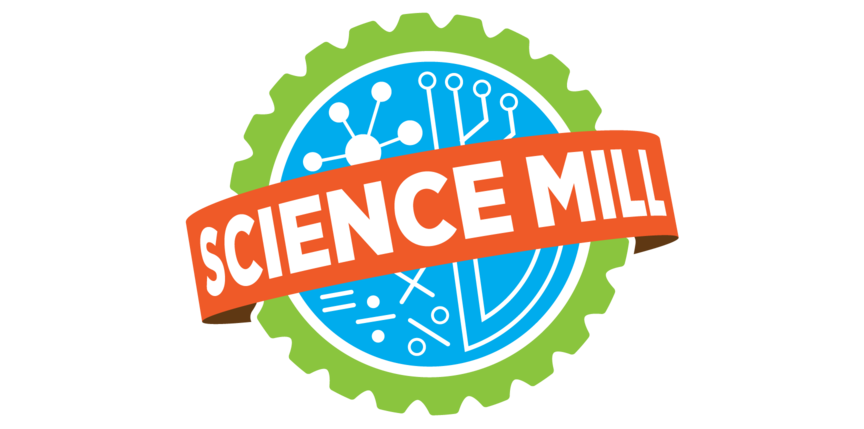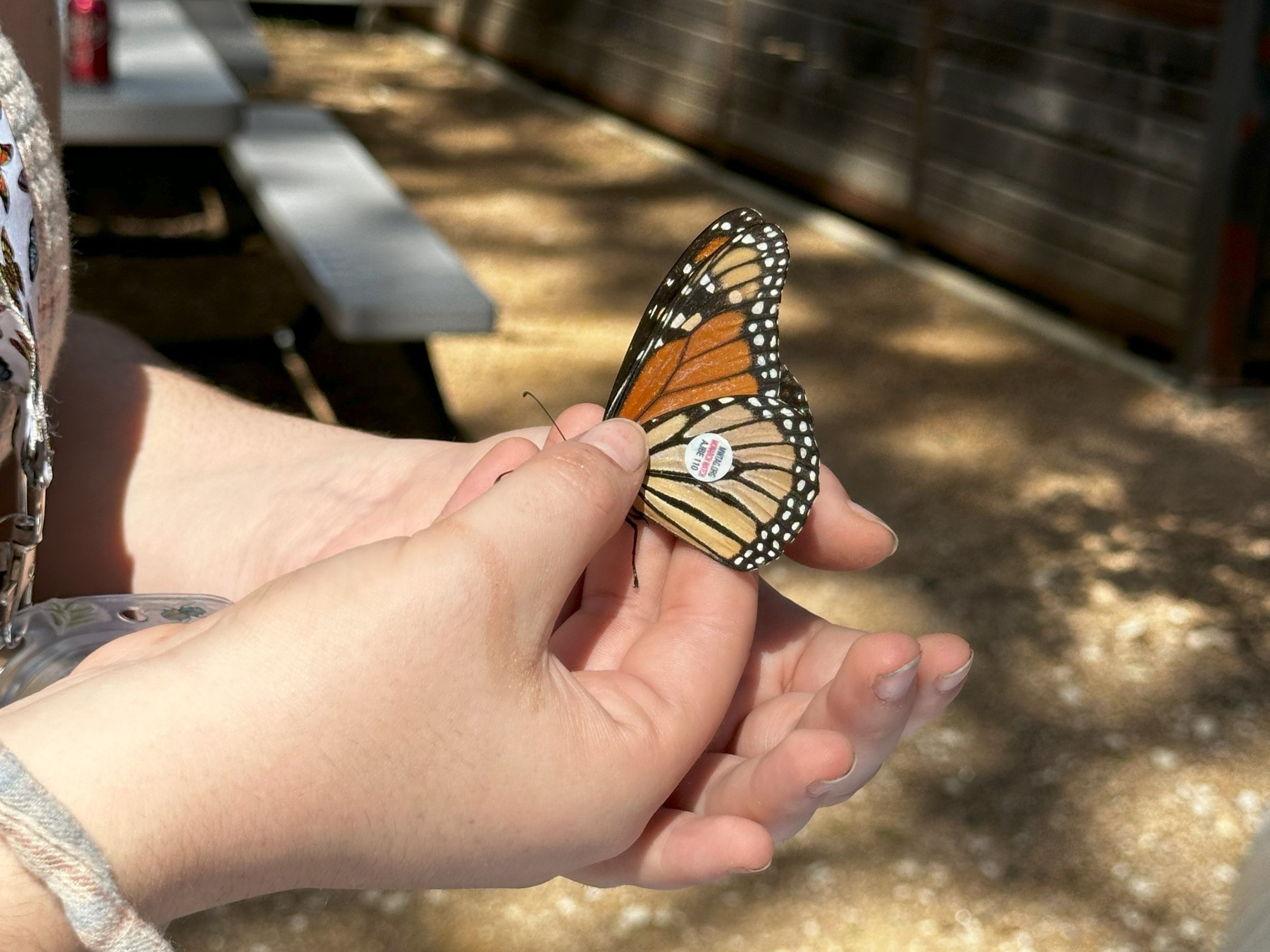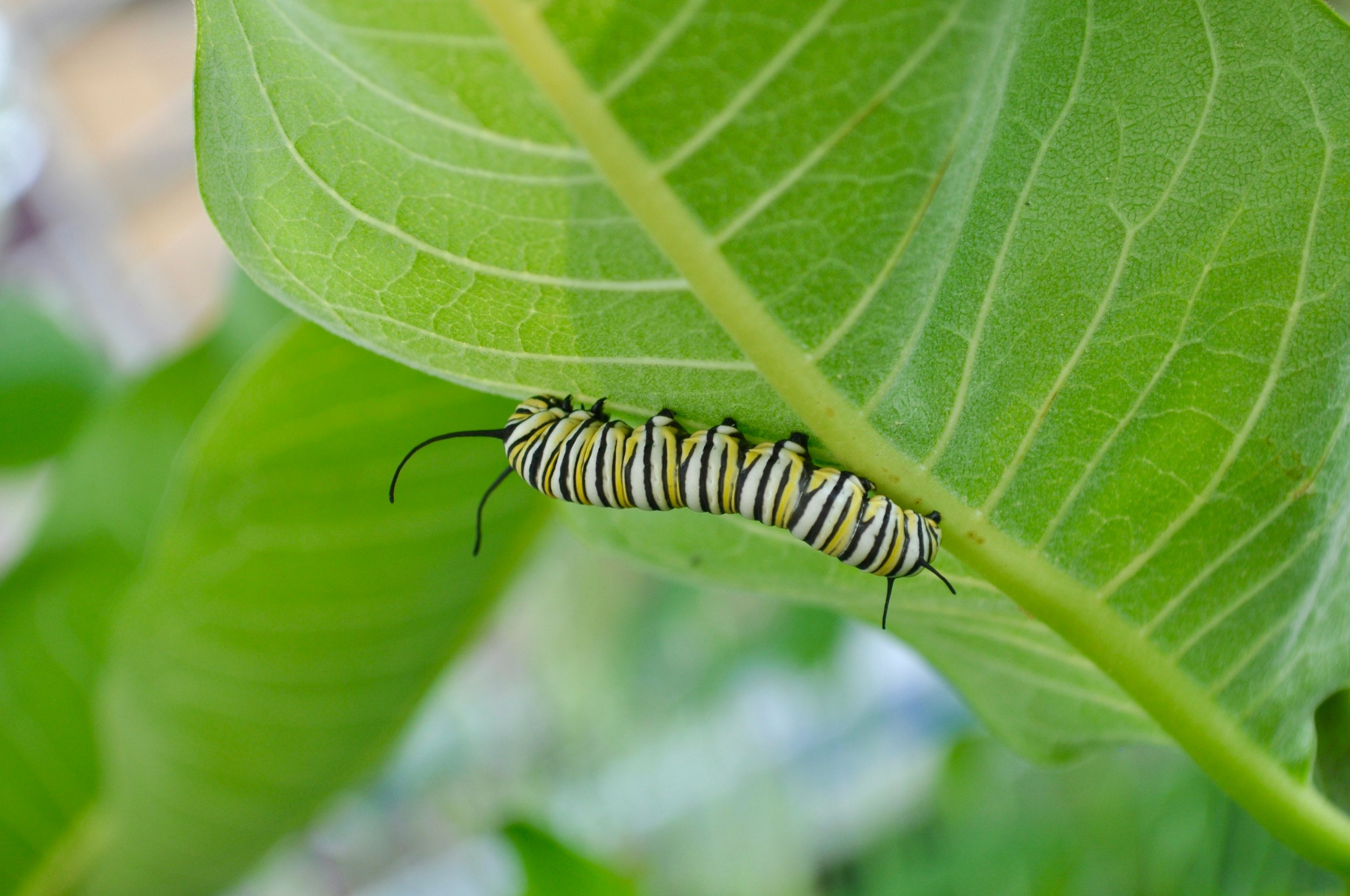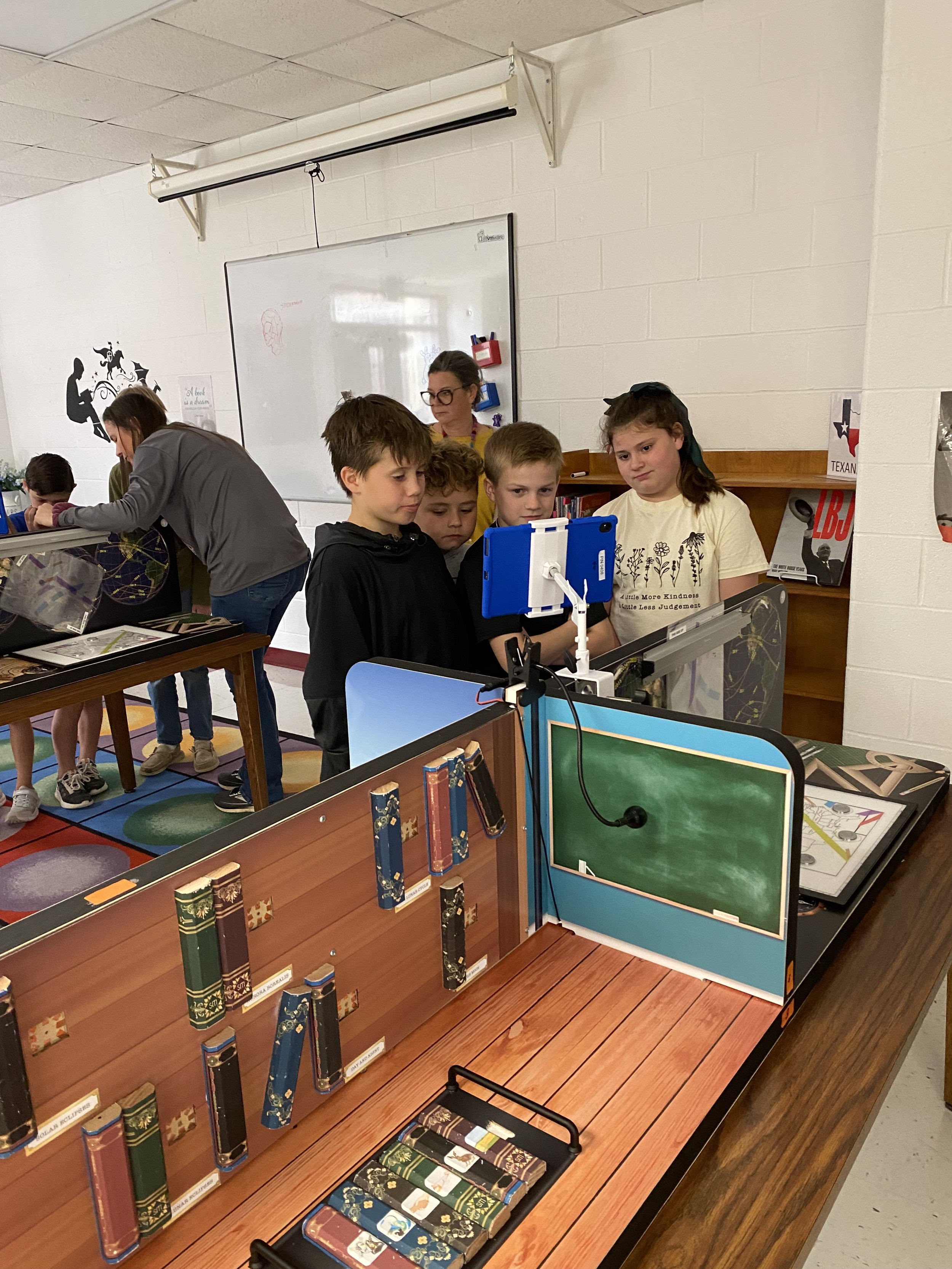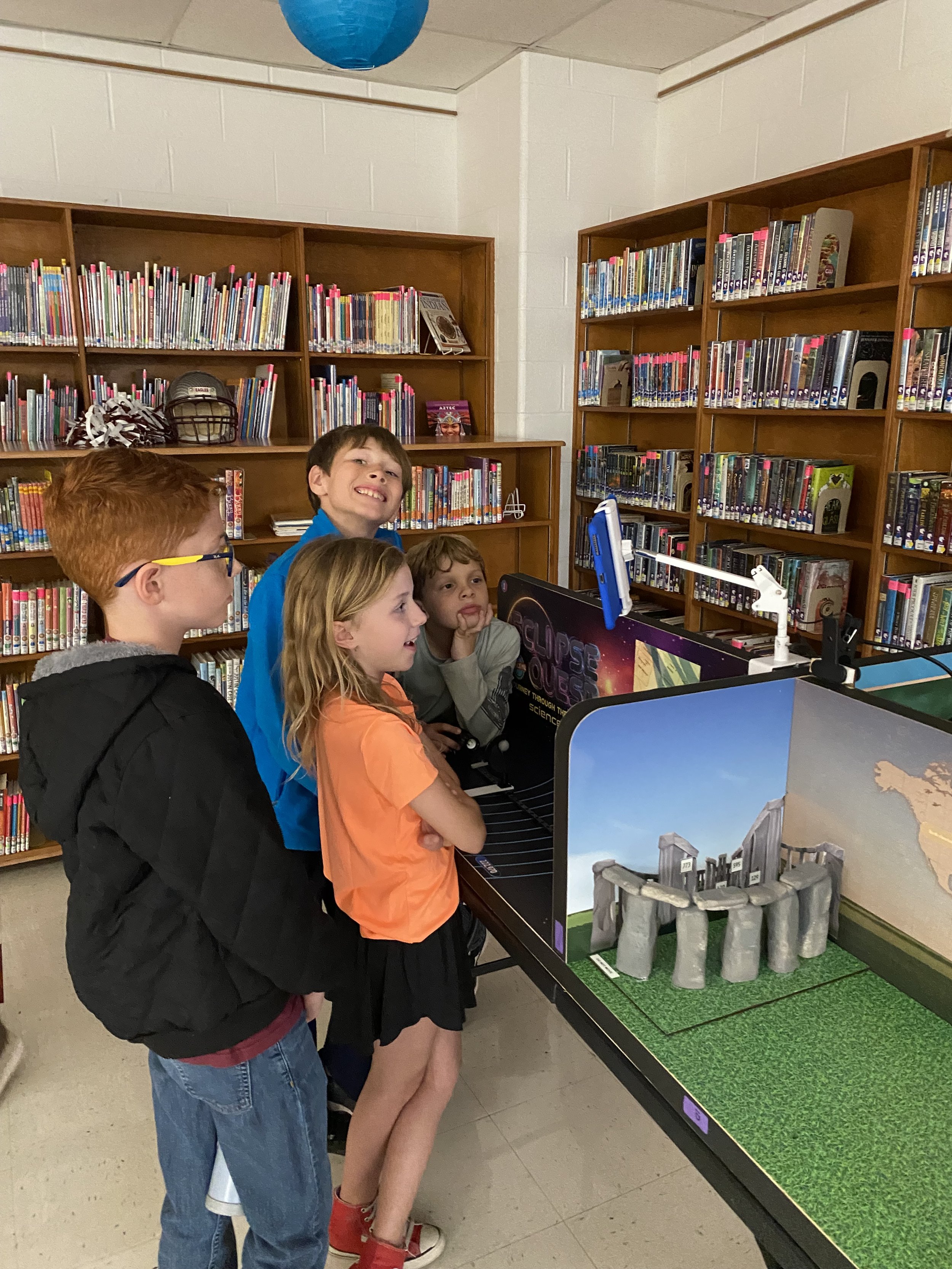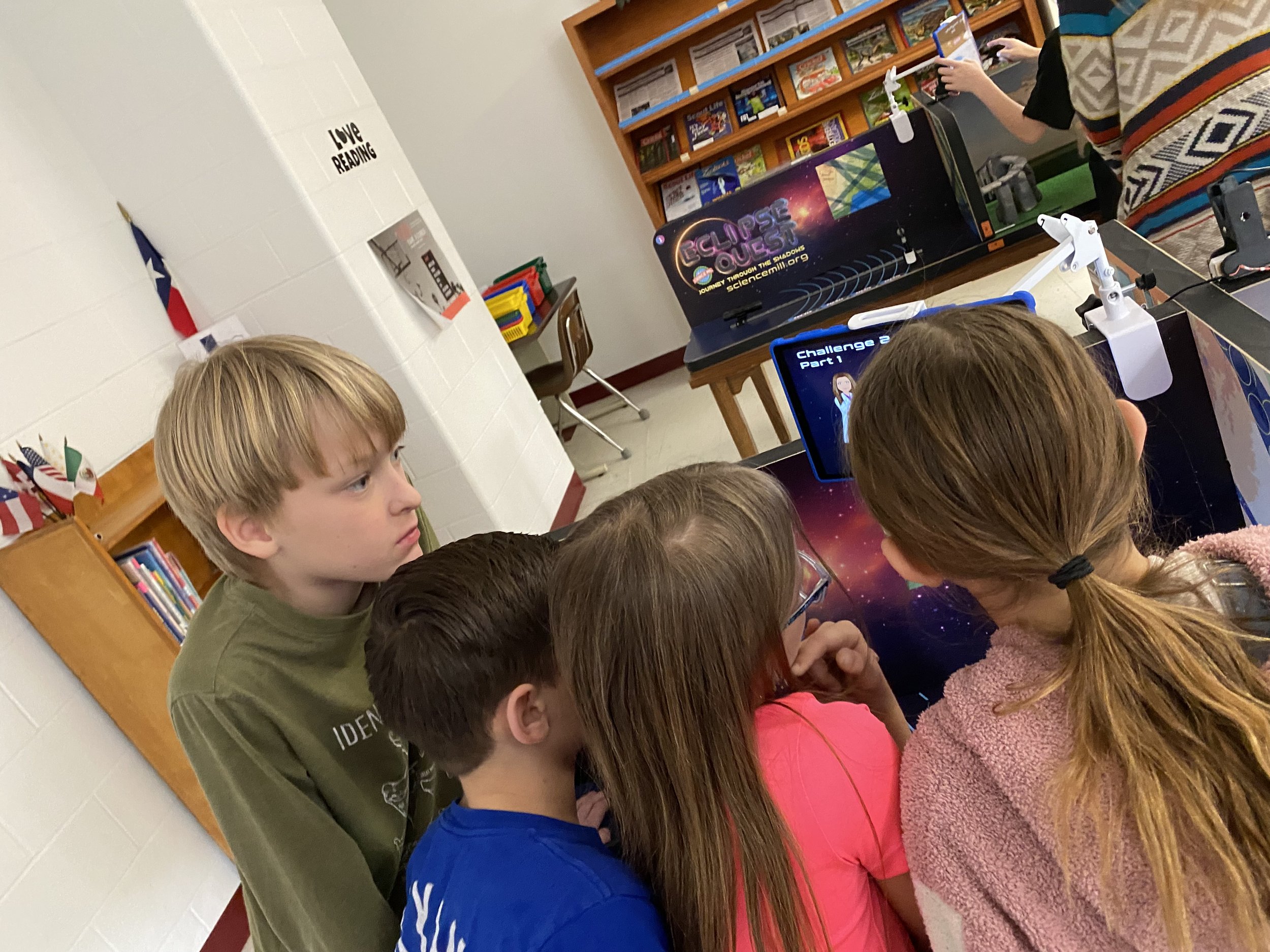Are you ready to join us and be monarch heroes?
This spring, the Science Mill and Science Outside are launching the Monarch Conservation Project – a year-long program dedicated to supporting and protecting the monarch butterflies.
What is the Monarch Conservation Project?
The Science Mill started this project in the fall of 2023 by becoming a Monarch Watch official Monarch Waystation.
This means that we have a certain amount of land dedicated to planting nectar sources for monarch butterflies as they make their way south, to the Oyamel fir forests of Central Mexico. We also participated in physically capturing and tagging adult monarch butterflies as they stopped in our backyard on their journey.
From last October’s Monarch Tagging
This spring, we are making further efforts by planting a native milkweed garden and rearing a batch of monarch caterpillars for release.
It is the hope that the milkweed will provide for these and other monarch caterpillars for years to come, along with the wonderful nectar sources in our main pollinator garden providing for adults who may stop in for a rest. If all goes well, another tag and release will be on the horizon for next year's events.
We hope to learn a lot this year about what works best for our site and really support migration in a big way this fall and in the spring of 2025.
— Rachel Grotte, Environmental Education Specialist and Curriculum Coordinator
It is crucial that small efforts like these are made around the continent, as monarch butterflies are struggling more than ever. Overwintering numbers were down by as much as 60%. Despite the monarch butterfly now being on the endangered species list, we remain hopeful that, with the work of numerous great organizations, collaborations, and efforts, they are on their way to recovery.
The Science of the Monarch Butterfly: Danaeus plexippus
Monarch butterflies have an incredibly complex life cycle and migration cycle. They are considered holometabolous, or undergo complete metamorphosis. This means that they go through all four stages, including a pupal stage.
They change from a wiggly caterpillar, ravenous for tender milkweed leaves, eating a foot and a half before being satiated, to a soft jade green chrysalis, then emerging as a rather large black and orange butterfly, as lovely as it is unpalatable to predators, capable of flying hundreds of miles.
The migration cycle is even more astounding when you realize that the central monarch migration is happening in a sort of grand relay which takes 4-5 generations before completion. Adults live 2-4 weeks at most in the summer, spending it mating and laying eggs on milkweed. Only one of the generations are migrating butterflies, the last of the year. They can live longer, but face many challenges on their way. Learn more about the science of the monarch life cycle at Journey North FAQ with Dr. Karen Oberhauser.
What can you do to help?
Plant a Pollinator Garden!
If you plant it, they will come. The butterflies that is! Butterflies, bees, flies and many beetles all love nectar. We can plant milkweeds that are native to our region, plus nectar plants for the adult butterflies to rest and refuel on their long journey. Planting a wide variety of other native perennial flowers will serve as a food source for monarchs and other important pollinators. In Texas, we have over 800 native bee species alone!
Native flowering perennials are hardy plants that are often drought resistant, and come back every year, easily supporting the ecosystem of your backyard. See the Xerces Society guide on what nectar plants are the most impactful for Monarch butterflies in your region. Another option is to plant a mixed seed garden meant for your ecoregion. A Southern Plains pocket prairie is great for most of Texas. Native American Seed, based in Llano, is a great resource for inspiration, quality guides and instructions, plus pesticide free seeds just right for your region’s pollinators. We recommend the Pollinators Essentials or many other highly specific seed blends.
Avoid pesticides
Monarch caterpillars feed specifically on Asclepias leaves, which are found wild and generally uncontaminated by pesticides. (If rearing monarchs, do not feed from sources that may be sprayed.) Flowering nectar plants sold in many large operation nurseries may have had broad spectrum pesticides applied to them, and are not always safe as a nectar source for adult butterflies. Talking to the people at your local nursery is a great idea. Ask them if they use neonicotinoids and similar systemic insecticides. Let them know you would love to see some pesticide free native plants in the nursery. See this page for more ideas.
Check this database to find a resource near you!
Remove your tropical milkweed
Through research and observation,it is now known that the tropical milkweed (Asclepias curassavica) should not be planted in temperate areas where it does not die back in winter. It can grow later in the season than native milkweed, confusing adults into breeding and laying eggs instead of migrating. These eggs will not survive the winter. In addition, tropical milkweed has been suspected of furthering the spread of a protozoan parasite of monarch’s called Ophryocystis elektroscirrha, or OE. Normally, native milkweeds die back after blooming and the parasite dies along with them so that each summer’s monarch population feeds on fresh, parasite-free foliage.
Participate in Community Science or Community Projects
A great way to help monarchs and other ecologically important species is to get involved in Community or Citizen Science projects. Reporting sightings of monarch butterflies on Journey North or iNaturalist is easy and helps us learn more about Monarch populations.
You could also consider planting a local community garden with a pollinator focus or create a seed sharing network with your neighbors. You could talk to your neighborhood about leaving the wildflowers during peak season, and avoiding pesticides in landscaping areas.
Some Monarch specific online community science projects can also be found on Monarch Watch. You can participate by tagging monarchs, reporting monarch sightings to help with population estimates, or get serious and become a trained participant in the Monarch Larva Monitoring Project.
Public support and resources to get started:
Community Science and Conservation
journeynorth.org
What milkweed for my area?
Ecoregion map and appropriate milkweed species at Monarch Watch Seed Needs
Check where Monarchs are near you or report your sightings!
Monarch Watch
Craft Corner
Make your own 3D Monarch Butterfly Life Cycle Paper Craft
Instructions:
Print the template provided.
Cut out the pieces. Fold on the dotted lines.
Add glue to the glue panel on each piece.
Place the pieces together so that they connect in the correct order of metamorphosis.
Display your life cycle model proudly and tell everyone who sees it about how they can help conserve monarchs!
